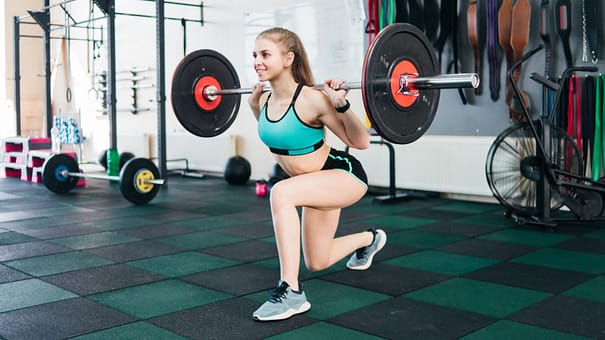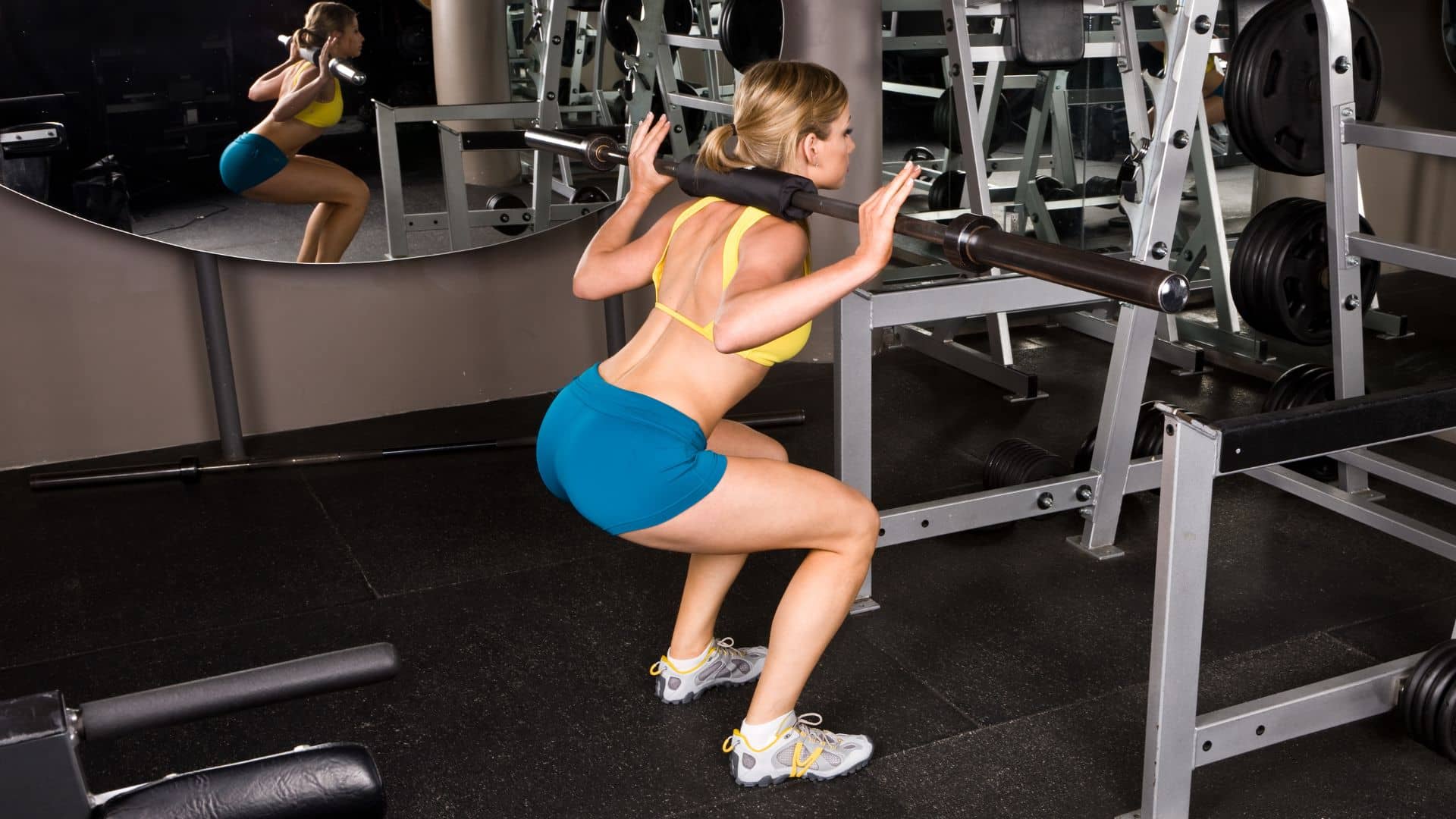Hey there, fitness enthusiasts and curious minds! If you’ve ever wondered whether a 50 kg squat is considered good for someone weighing 50 kg, you’re not alone. It’s a question that often pops up on the journey to a healthier, stronger you.
So, let’s dive right in and unravel the answer, exploring the factors that come into play and what it all means for your fitness goals.
Whether you’re a seasoned lifter or just starting, this blog post has something for everyone. Let’s get squatting!
Exploring whether the 50 kg squat is good for 50 kg body weight.
A 50 kg squat is a decent starting point, but whether it’s considered “good” for someone who weighs 50 kg (110 pounds) depends on various factors, including your fitness goals, training experience, and overall strength.
Here are some considerations:
Relative Strength: Relative strength, which is strength relative to body weight, is a valuable measure.
In your case, squatting your body weight (50 kg) is a good milestone for many people, especially if you’re relatively new to strength training.
Fitness Goals: Your definition of “good” can vary depending on your goals. If you’re squatting as part of a general fitness routine, squatting your body weight is a solid achievement. However, if you have more specific strength goals (like powerlifting or bodybuilding), you might aim for higher weights.
Training Experience: Your level of experience matters. If you’ve been strength training for a while, you might expect to lift more than your body weight in the squat. Beginners typically have room for substantial improvement.
Form and Technique: Proper form and technique are crucial to avoid injury and maximize your progress.
It’s essential to perform squats with good form, even if the weight isn’t exceptionally heavy. Consider seeking guidance from a qualified trainer if you’re unsure about your form.
Progression: One key aspect of strength training is progressive overload, which means gradually increasing the weight you lift over time.
If you continue to challenge yourself and increase the weight as you get stronger, you’ll likely see improvements in your squat strength.
In other words, squatting your body weight is a respectable achievement, especially if you’re relatively new to strength training.
Whether it’s “good” for you specifically depends on your goals, experience, and commitment to proper form and progression.
Setting personal goals and consistently working towards them is a great approach to track your progress and define what’s good for you.

Further Explanations.
Let’s dive deeper and elaborate further on all the points mentioned.
let’s dive deeper into the concepts of relative strength and fitness goals:
Relative Strength:
Definition:
Relative strength is a measure of how strong you are in relation to your body weight. It’s often used to gauge the efficiency and effectiveness of an individual’s strength. In the context of squatting, it means being able to lift a certain weight (e.g., your body weight) in proportion to how much you weigh.
Value:
Relative strength is valuable because it levels the playing field, allowing individuals of different sizes to compare their strength on a more equal basis. This measure is especially useful for assessing functional strength and athleticism.
Example:
If two people weigh the same but one can squat their body weight, while the other can’t, the first person is considered to have better relative strength in the squat.
Fitness Goals:
General Fitness Routine:
If your primary goal is overall fitness, health, and well-being, squatting your body weight is a solid achievement.
It signifies that you have developed a baseline of strength and mobility that can support daily activities and reduce the risk of injury. This level of strength is often sufficient for most people pursuing general fitness.
Specific Strength Goals (Powerlifting/Bodybuilding):
In contrast, individuals with specific strength goals in mind may set higher standards. For example:
Powerlifting:
Powerlifters compete in three main lifts, including the squat. In powerlifting, the goal is to lift as much weight as possible in a single repetition (1RM).
In this sport, “good” squat strength would be relative to the competitive standards of your weight class.
Bodybuilding:
Bodybuilders focus on developing muscle size and aesthetics. While strength is important, it’s not the primary goal.
Bodybuilders may still aim to lift heavy weights but often prioritize muscle isolation exercises and hypertrophy (muscle growth) over sheer strength.
Individual Variation:
What’s considered “good” can vary greatly between individuals based on their genetics, training history, and personal objectives.
Some people may naturally excel in certain lifts, while others need more time and effort to achieve the same results.
In essense, relative strength, such as squatting your body weight, is a valuable measure of strength-to-weight ratio, particularly in the context of general fitness.
The definition of “good” squat strength varies depending on your specific fitness goals.
It can range from achieving a body weight squat for general fitness to lifting heavier weights in powerlifting or bodybuilding if those are your specialized objectives.
Your goals should guide your training and what you consider a significant achievement.
let’s delve deeper into the concepts of training experience, form and technique, and progression in strength training:
Training Experience:
Definition:
Training experience refers to the amount of time you’ve spent engaged in a particular type of physical training, such as strength training. It encompasses your familiarity with various exercises, techniques, and training principles.
Importance:
Your level of training experience significantly impacts your strength levels. Experienced individuals typically have more efficient neuromuscular coordination, better muscle recruitment, and a deeper understanding of training methods. This often allows them to lift heavier weights compared to beginners.
Beginners:
Beginners in strength training often experience what’s known as “beginner gains.” This means they can make rapid progress initially as their bodies adapt to the new stimulus.
As a result, they have significant room for improvement and can expect to increase their squat strength relatively quickly.
Experienced Lifters:
Those with extensive training experience may need to employ more advanced training techniques and strategies to continue making significant strength gains.
Lifting more than their body weight in the squat is a common achievement for experienced lifters.
Form and Technique:
Definition:
Form and technique refer to the way you perform an exercise. In the context of squats, it includes factors like body positioning, joint alignment, depth of the squat, and the movement pattern.
Importance:
Proper form and technique are crucial for several reasons:
Injury Prevention:
Correct form reduces the risk of injuries, such as strains, sprains, or muscle imbalances.
Efficiency:
Proper technique ensures that you are using the right muscles and movement patterns, making your workouts more effective.
Progression:
Good form allows for consistent progression as you lift heavier weights over time.
Seeking Guidance:
If you’re new to strength training or unsure about your form, it’s highly advisable to seek guidance from a qualified trainer.
They can help you learn the correct form and provide feedback to improve your technique.
Progression:
Definition:
Progression in strength training involves gradually increasing the weight or intensity of exercises over time to stimulate muscle growth and strength gains. This principle is known as progressive overload.
Importance:
Progressive overload is the cornerstone of strength development. Without it, your body won’t have a reason to adapt and get stronger.
Progression can occur by adding more weight to the bar, increasing repetitions, or reducing rest periods between sets.
Tracking Progress:
Keeping a training log is essential for monitoring your progression. It helps you track the weights you’ve lifted, the number of repetitions, and other relevant data, enabling you to set and achieve specific goals.
Variation:
To prevent plateaus and stimulate continued progress, it’s also important to incorporate variations of the squat (e.g., front squats, Bulgarian split squats) and periodically change your training routine.
In all this, training experience influences your strength levels, with beginners having substantial room for improvement.
Proper form and technique are vital for safety, efficiency, and long-term progress in strength training.
Finally, progression through gradual increases in weight and other training variables is essential for ongoing strength gains.
Your experience, form, and progression are interrelated aspects of your strength training journey, all of which contribute to your overall success.
A tabular on this topic here.
Here’s a tabular representation to summarize whether a 50 kg squat is considered good for a person weighing 50 kg. Keep in mind that this is a simplified overview and individual factors may vary.
| Aspect | Evaluation |
|---|---|
| Strength Level | Relative to body weight, it’s a solid start. |
| Fitness Goals | Suitable for general fitness. |
| Training Experience | Beginners often start here with room to grow. |
| Form and Technique | Proper form is essential, regardless of weight. |
| Progression | Can serve as a baseline for future improvement. |
Please note that the evaluation may differ based on specific fitness goals and individual circumstances. For personalized advice, it’s recommended to consult with a fitness professional or trainer who can assess your unique situation and provide guidance accordingly.
Conclusion.
In conclusion, a 50 kg squat for a person weighing 50 kg is a respectable starting point, especially for those new to strength training or pursuing general fitness goals.
However, it’s essential to prioritize proper form and technique while aiming for gradual progression to achieve higher levels of strength and fitness.
Specific definitions of “good” can vary based on individual objectives, but this represents a solid foundation for future improvements in squat strength.

Hey there, it’s Mike Rrsq, the Editor-in-Chief over at Jsquat.com, and I’m absolutely obsessed with all things squat fitness! I’ve been lucky enough to get some serious recognition for my work in this field. With a solid background in the fitness and wellness industry, I’ve been there right from the get-go, helping shape this website into what it is today.
You see, I’m not just the boss around here; I’m also a passionate contributor. I love sharing my insights through my articles, and trust me, they’re not your run-of-the-mill stuff. Each piece I write is a labor of love, filled with my expertise and real-world experience in the fitness universe. So, if you’re into fitness and looking for some inspiration, you’re in the right place!


